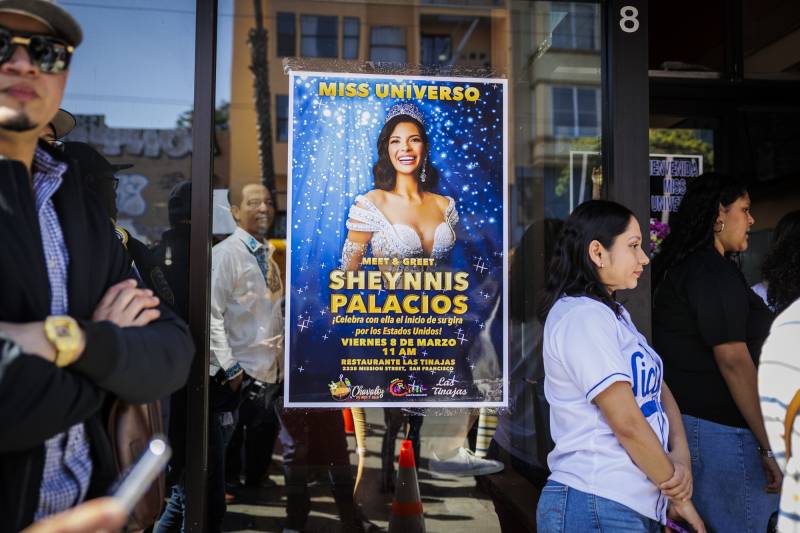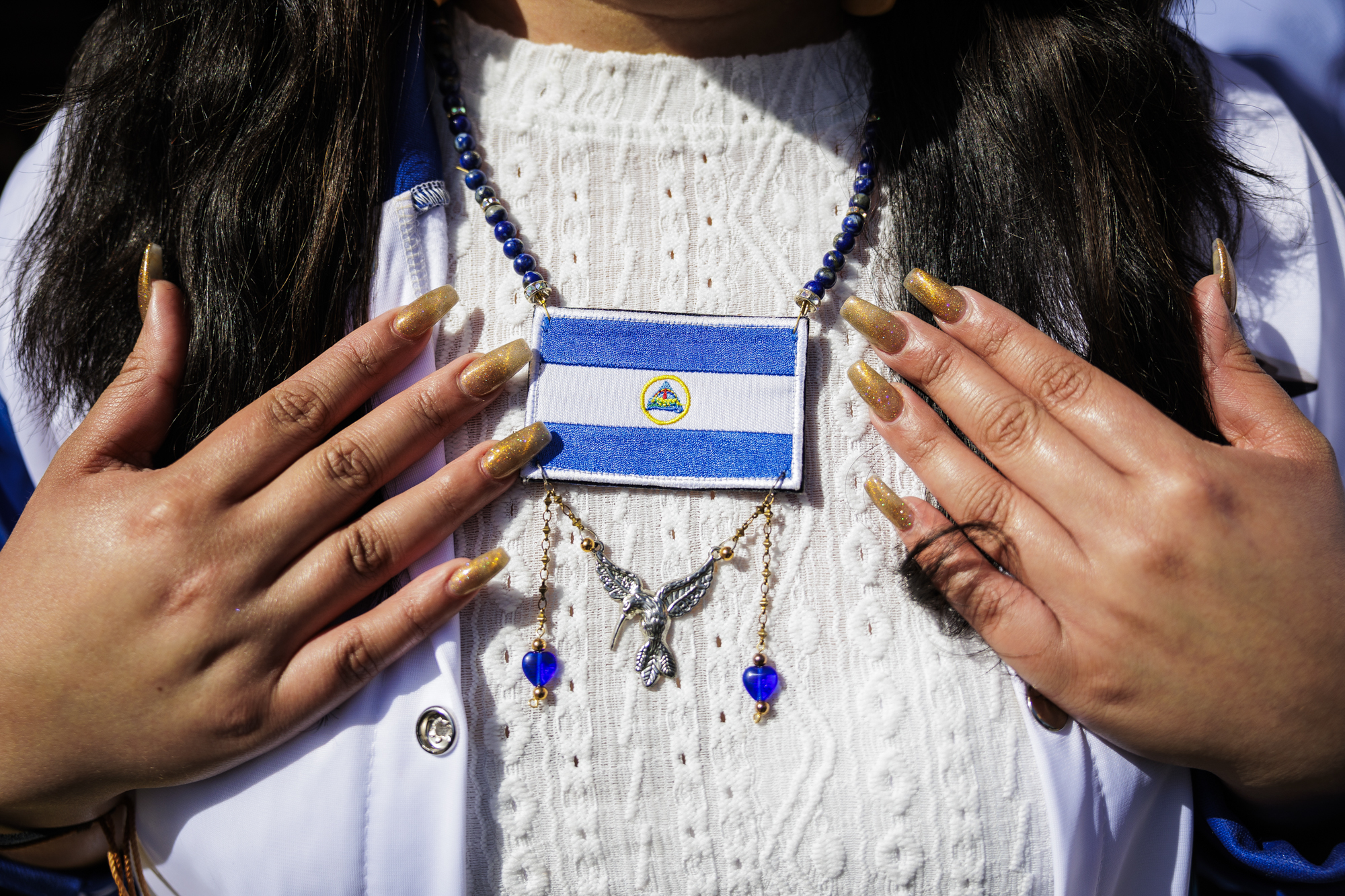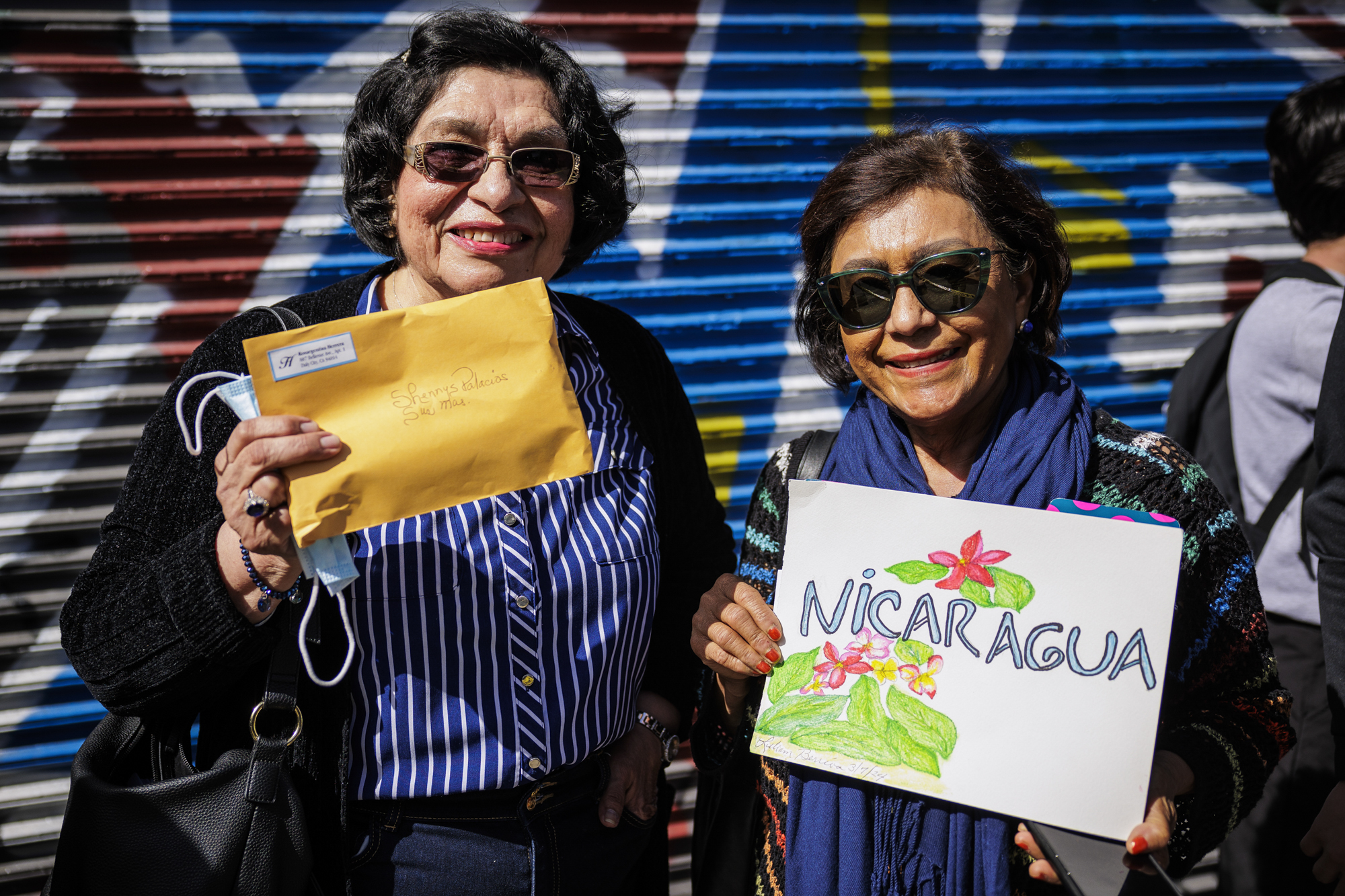For a few hours on a sunny March morning, one corner of San Francisco’s Mission District seemingly transformed into a place thousands of miles away — Nicaragua.
Hundreds of people formed a line outside Nicaraguan restaurant Las Tinajas, many waving national flags. Men were dressed in their finest blue and white Nicaraguan baseball jerseys, and little girls wore flowers in their hair and carefully embroidered dresses with blue and white ruffles.

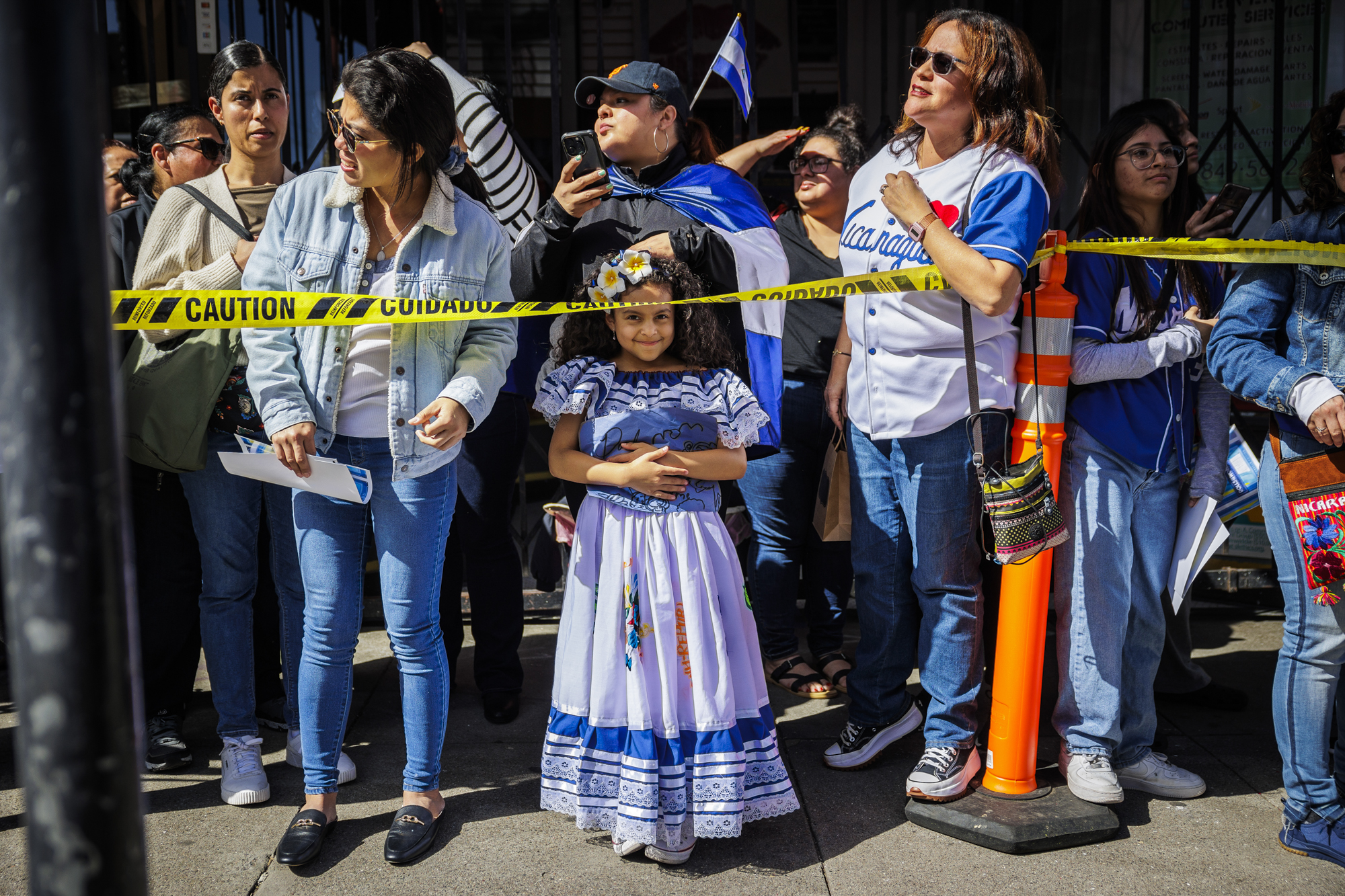
All were there to catch a glimpse of one person, someone who could easily claim the title of the most famous Nicaraguan in the world: 23-year-old Miss Universe Sheynnis Palacios.
Palacios, who in November became the first Nicaraguan to win the international beauty pageant in its 72-year history, kicked off her official tour of the United States at Las Tinajas. Wearing her Miss Universe sash, Palacios arrived to the sound of cheers so loud they drowned out the music that usually fills this stretch of Mission Street.
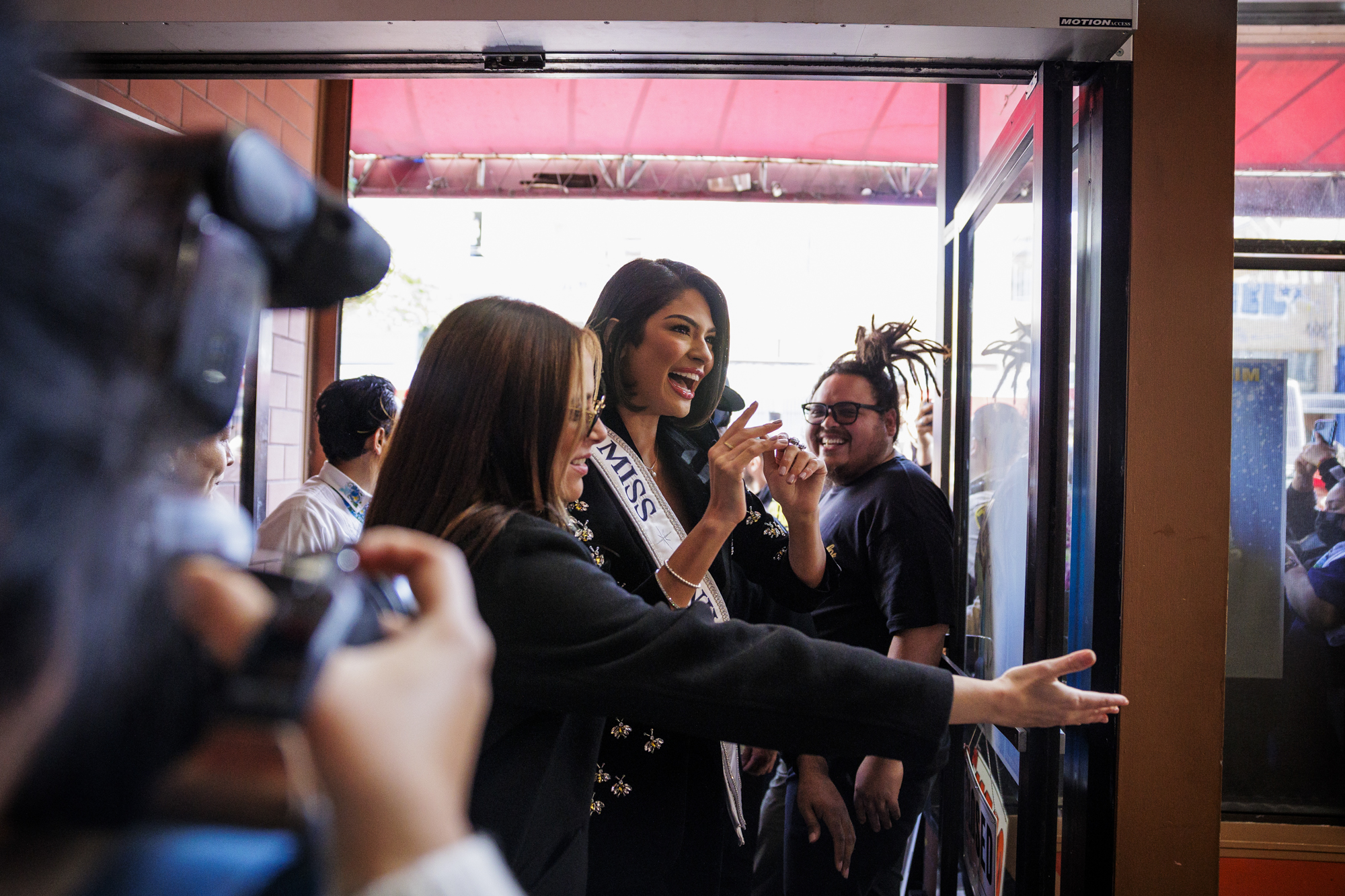
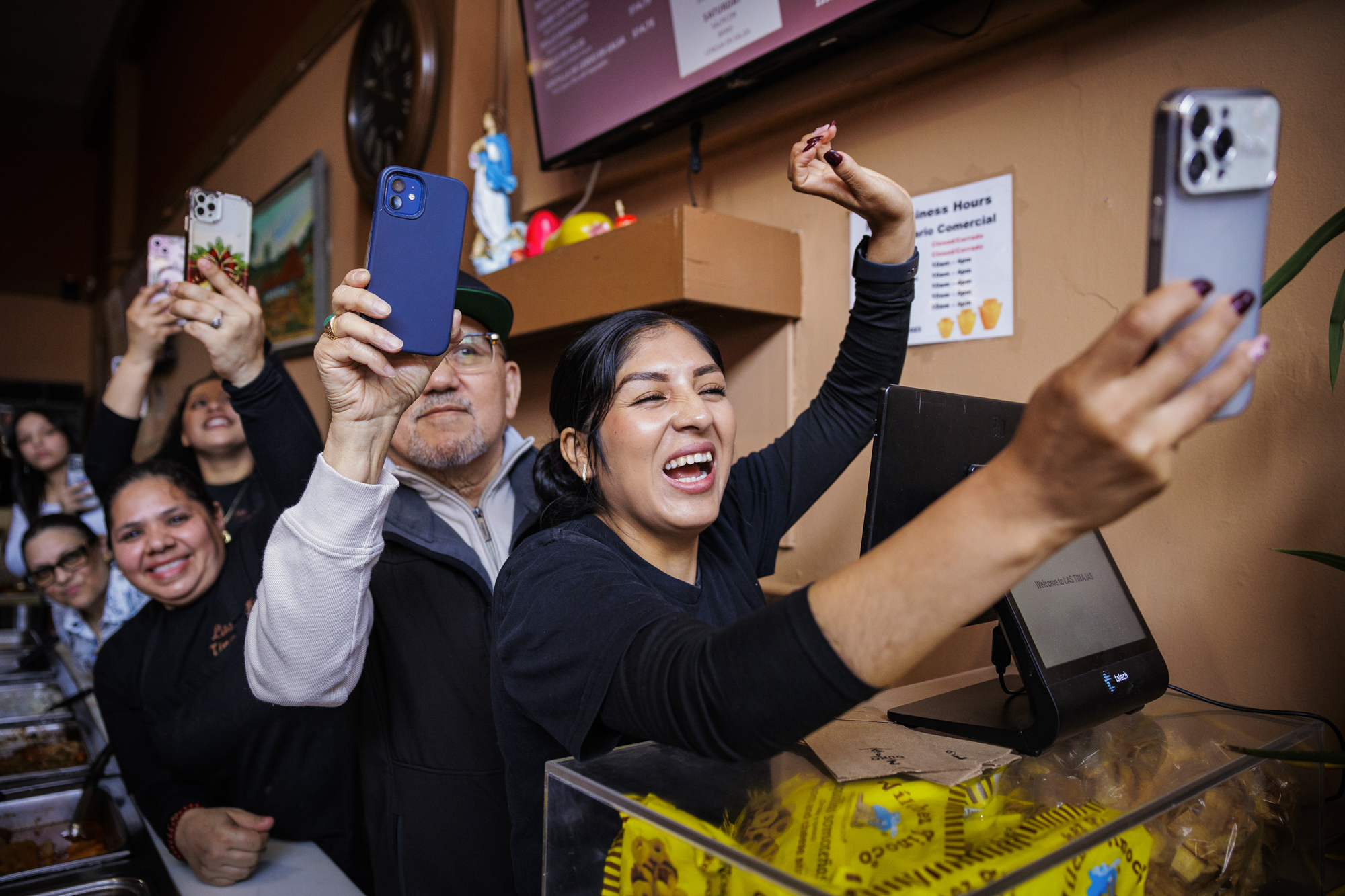
Palacios did not give any remarks and instead greeted her assembled fans, who entered the restaurant one by one to snatch a few moments — and a photo — with the beaming queen. Among them was Henrry Castro of South San Francisco, who shook with excitement as he waited his turn, holding a poster-sized photo of Palacios he’d had printed that morning. Though he only spoke to her for a brief moment, the experience affirmed his expectations.
“She’s an entrepreneurial woman with a humble heart, beautiful both inside and out,” he said in Spanish. “Everything that a Nicaraguan woman represents for us.”
Palacios rose to fame as a beauty queen. But for her fans who gathered in San Francisco, she represents much more than the Miss Universe crown she wears — a reputation fueled not just by her life story but also her stance towards the regime of Nicaragua’s President Daniel Ortega.
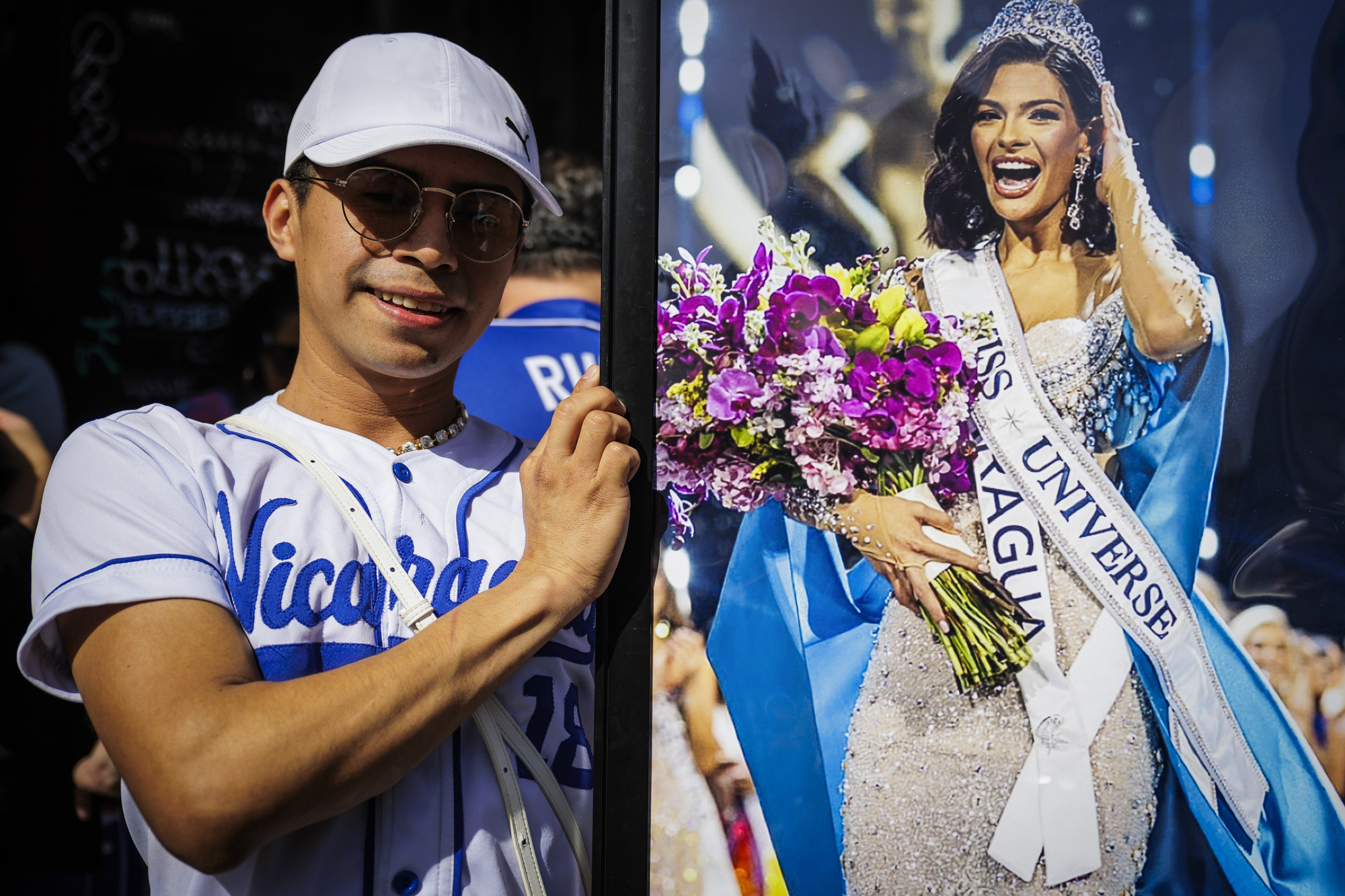
From Managua to the Bay
Next to Miami, the Bay Area has one of the oldest and most established Nicaraguan communities in the country. The armed conflicts of the ’70s and ’80s, which saw significant U.S. involvement, brought thousands of Nicaraguans to San Francisco, where families quickly formed networks to financially support each other and deliver clothing and food to folks still in Nicaragua.
Over decades, these communities have grown very close-knit, forming groups like Chavalos De Aquí y Allá, which, along with Carnaval San Francisco, helped organize the Miss Universe visit. And Palacios’ own mother, Raquel Cornejo, has lived in San Francisco for years.
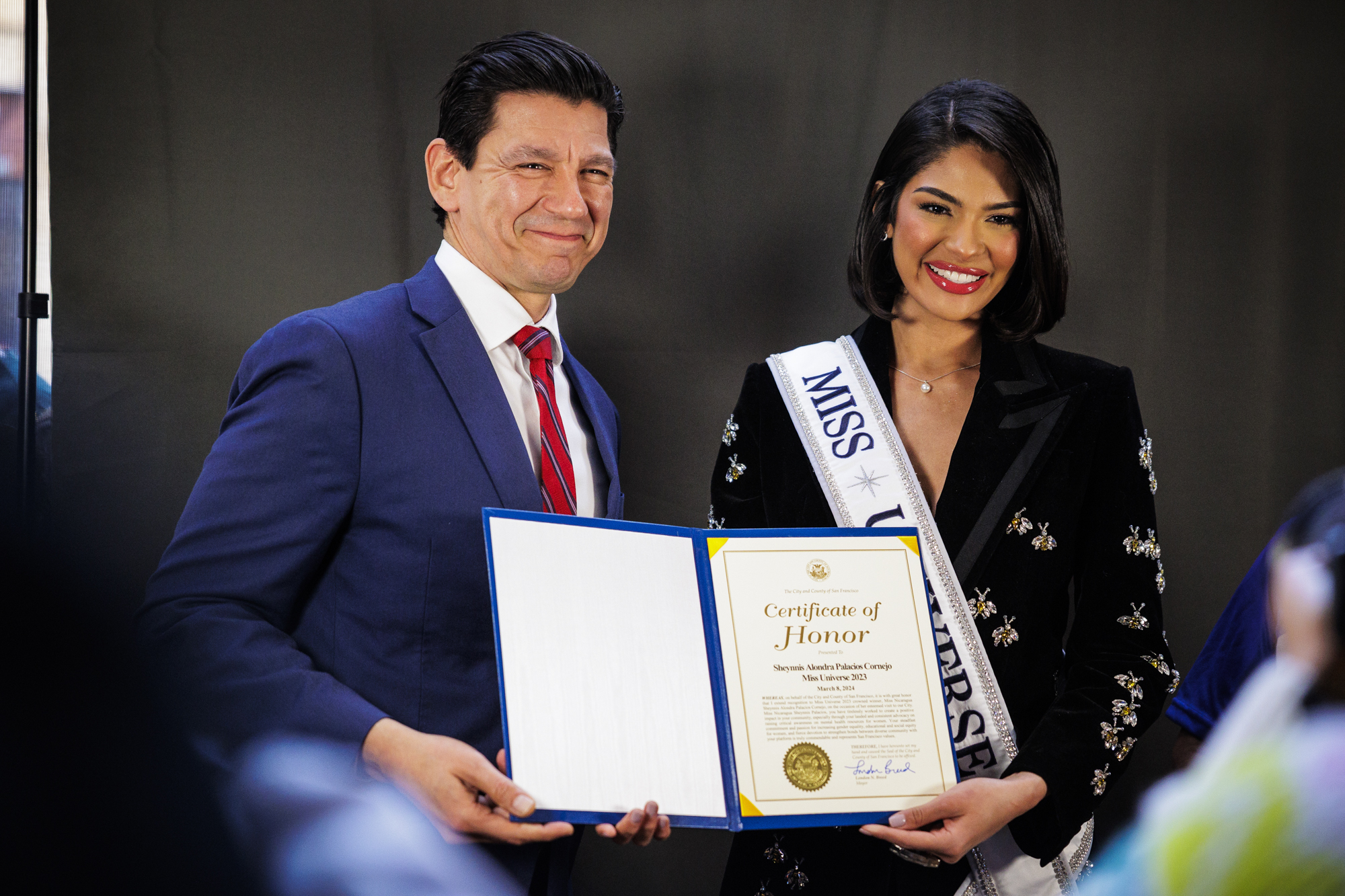
In April 2018, a series of protests erupted in Nicaragua against President Ortega, a former Sandinista rebel fighter who had served three consecutive terms since 2007. Tens of thousands of Nicaraguans took to the streets in favor of democratic reforms but were met with brutal — and deadly — repression from the government. In February of this year, during his fourth term, a panel from the international Human Rights Council accused the Ortega regime of human rights abuses “tantamount to crimes against humanity.”
When Palacios won the Miss Universe contest in 2023, the Nicaraguan government initially celebrated her victory as a point of national pride — until it emerged that Palacios had posted photos of herself participating in the 2018 protests to a now-deleted Facebook account. Nicaraguan police then accused the director of the Miss Nicaragua pageant of a conspiracy to favor anti-government contestants and arrested her family.
Aside from that Facebook posting, Palacios has not made any public statements about Ortega. But she swiftly became a symbol of resistance not just to people in Nicaragua but to the Bay Area diaspora, who in 2018 organized several rallies and communal efforts in solidarity with protesters in Nicaragua.
‘We’ve never seen this before’
“I love that she stood up for herself and what she believes is right,” said Susana Sanchez-Young, an East Bay graphic designer who came to Palacios’ appearance in San Francisco.
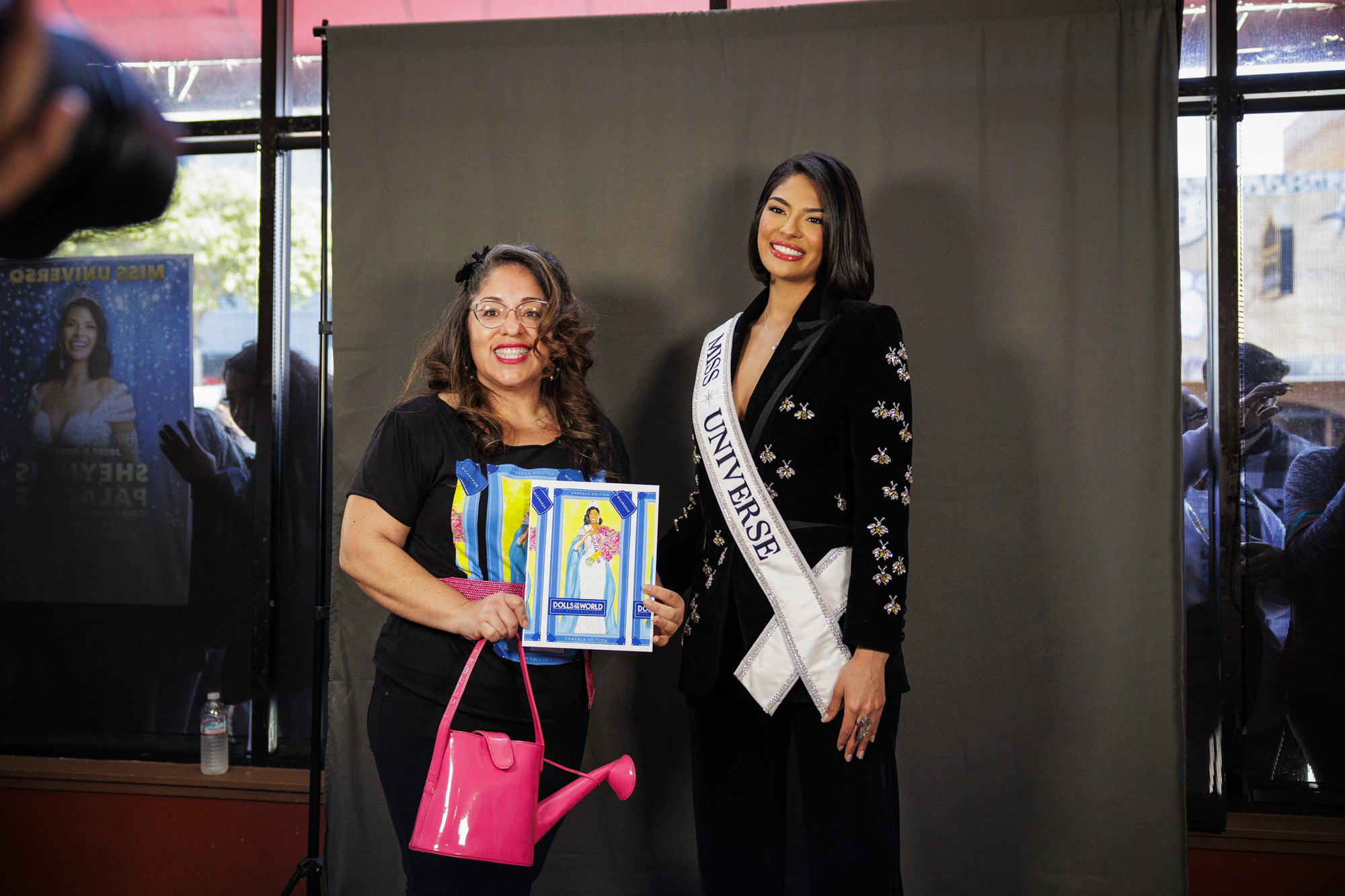
After Palacios won the Miss Nicaragua title last summer, more details of her life story emerged. Born in the country’s capital, Managua, and raised by her mother and grandmother on a limited income, Palacios started her own small business when she was in high school: selling buñuelos — sweet balls of fried dough — to pay her school fees and help support her family.
While some commentators in Nicaragua have used this to ridicule Palacios, for Sanchez-Young, it is only one more reason to root for Miss Universe. “The day that she won, I was so inspired,” Sanchez-Young said. “She’s nicaragüense, my culture. We’ve never seen this before.”
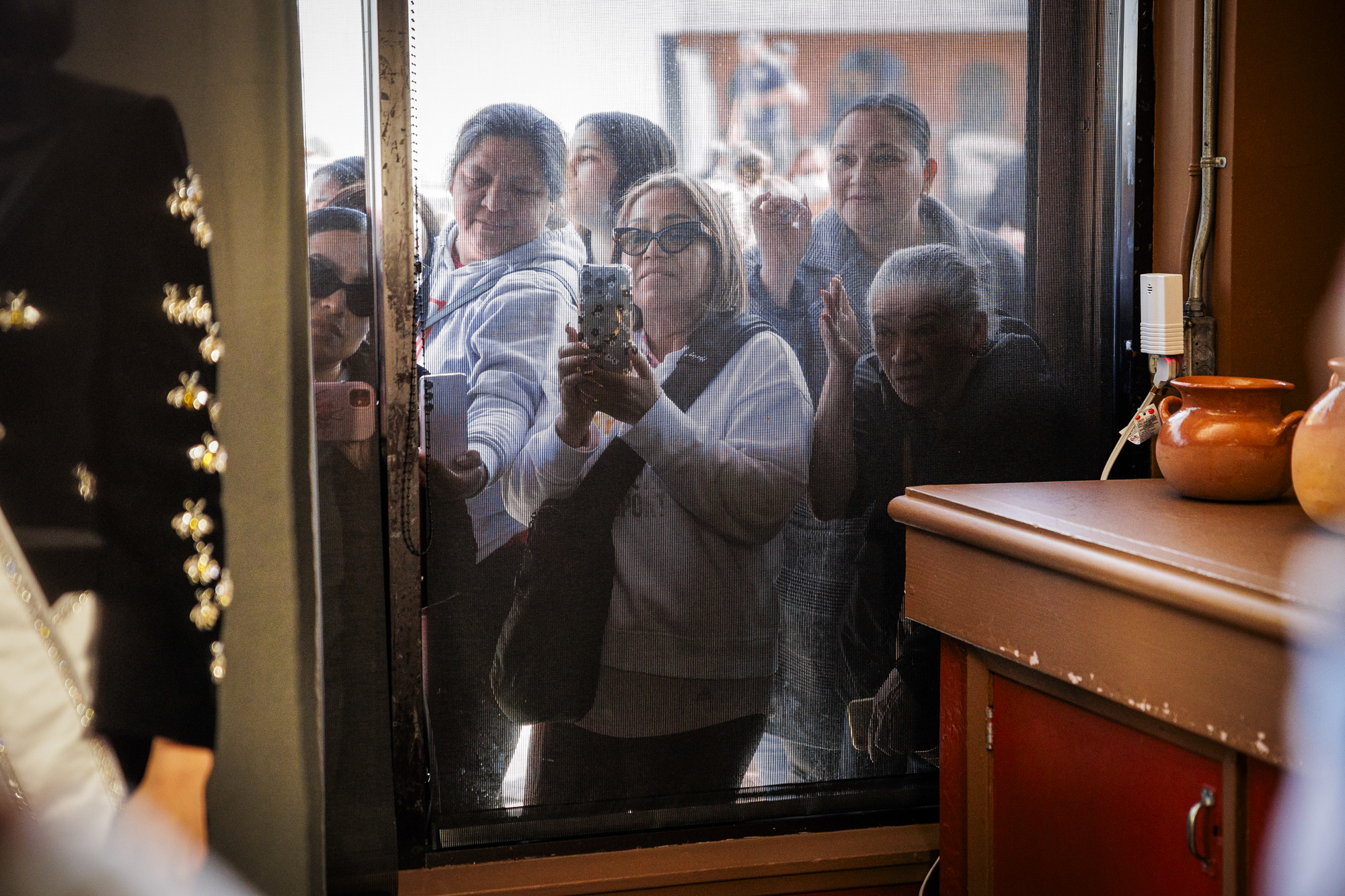
For Sanchez-Young, Palacios’ cultural status is such that she wants to see the new Miss Universe honored by another pop culture icon: Barbie.
For the past few months, Sanchez-Young has collected signatures urging toy manufacturer Mattel to create a Miss Universe Barbie representing Palacios. Her petition has amassed over 6,000 signatures and counting.
As she heard Palacios’s acceptance speech on television, Sanchez-Young said, she began drawing the newly crowned queen, guided by the vision of the first Nicaraguan Barbie.
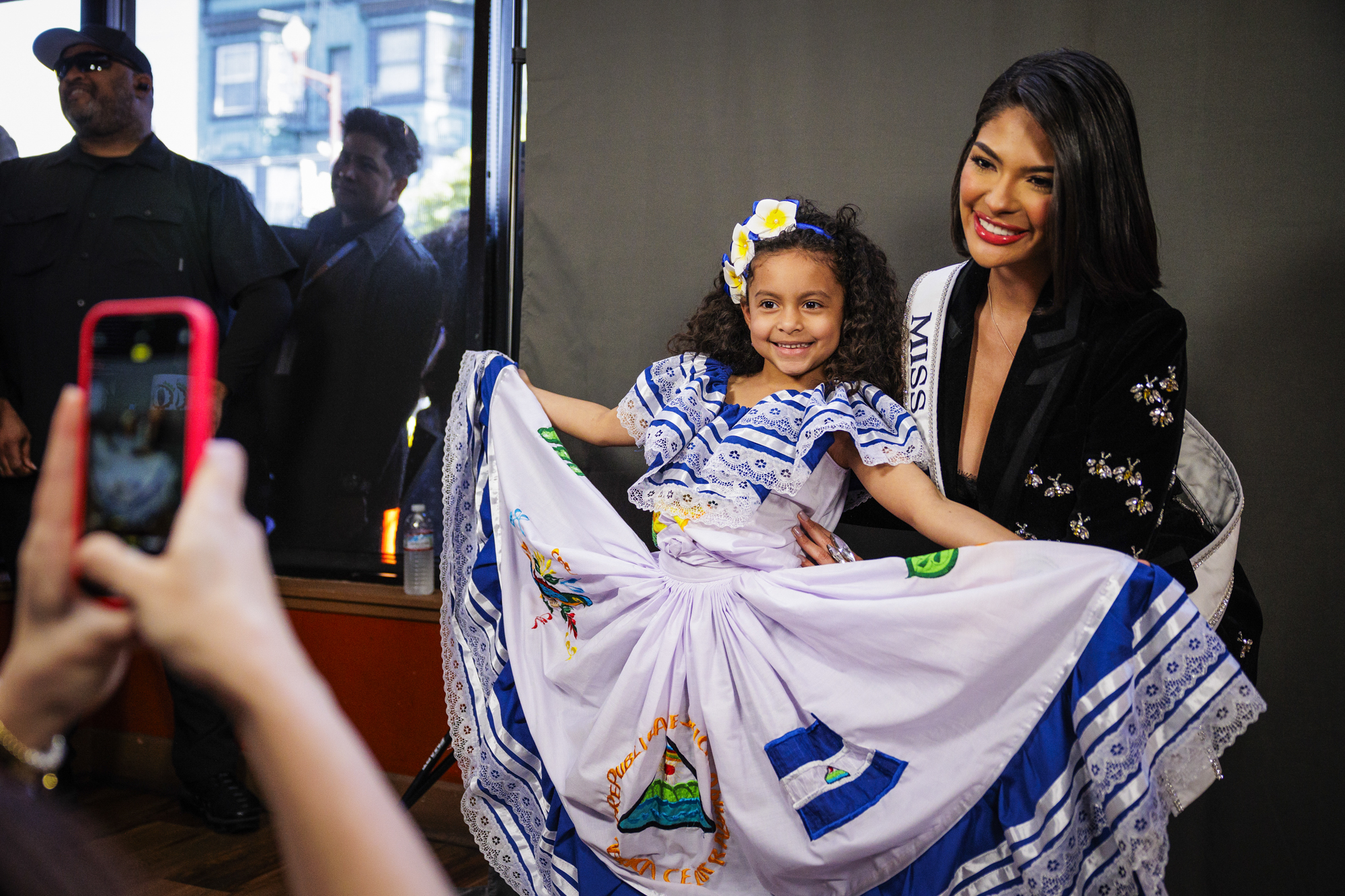
“We deserve Nicaraguan and Central American representation in the Barbie world — and they should start with her because she lit a fire under people,” Sanchez-Young said. “She lit up hearts all over Nicaragua, all over Central America, all over the world.”
‘The strength of a volcano’
News outlets across Central America report that the Ortega regime has now blocked Palacios from returning to Nicaragua. Despite that pressure, she has not walked back from her involvement in the 2018 protests — one of the reasons Palacios has become a role model for Michelle Fonseca of San Francisco.
“Ortega is oppressing the people, but the fact that she won, it wasn’t just a beauty pageant,” Fonseca said outside Las Tinajas. “She represented a symbol of freedom for nicaragüenses. She brought joy because the people of Nicaragua are crying for freedom.”
